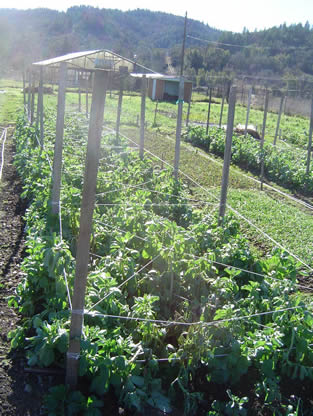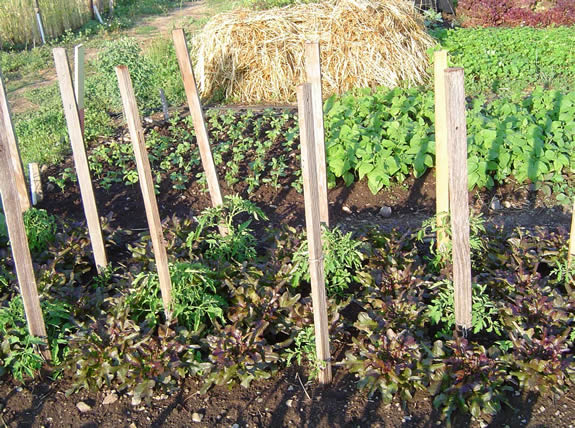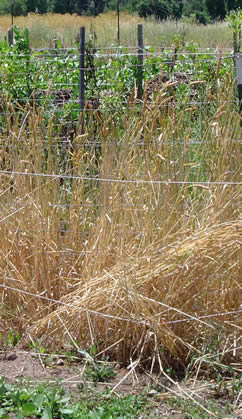- About Us
- Events & Opportunities
- Publications
- GROW BIOINTENSIVE
- International Partners
- Memberships/ Contributions
How Do I Trellis Vegetable Plants?
From Ecology Action
Question: What can you tell me about how to trellis various plants in my garden?
Answer: Thank you for your good question!
For tomatoes, we use a 6ft long 1"x 1" tomato stake to hold up each tomato plant. As the plant grows, at approximately every foot we tie a "figure-8" loop of twine around the stake and the tomato, completing the loop with a bow like a shoe lace. This enables you to untie the twine and reuse it later.
Staked and tied tomato seedlings interplanted with lettuce.
Image credit: Dan Royer-MillerFor cucumbers, we do not trellis; the shade provided by the closely-spaced plants (in accordance with GB planting standards described in the Master Charts in How to Grow More Vegetables) produces high yields with less water, and protects the soil organic matter from oxidation.
For peas (both bush and pole varieties), in a 100-square-foot growing bed (5ft x 20ft), starting in one corner of the bed, place a 6-foot-long 1"x1" pole every five feet on center, ten poles total for a 100-sq. ft. bed. Next, starting 12 inches up from the soil level, and every 12 inches after that as high as you expect your crops to grow, put a string retainer stretching and looping around each stake, and tying with a bow when you return to where you started. In addition, add cross strings at the same 12-inch levels to make an "X" at each vertical string. This will prevent the peas from "lodging" or falling over. This method of trellising also works for grains.
We hope you find this helpful. Happy gardening!

Left: Fava beans staked and supported with "X" of twine as described above.
Right: Unsupported grains "lodging" (falling over onto eachother)
Image credit: Dan Royer-Miller
Click here to become a member or to donate to Ecology Action online!

